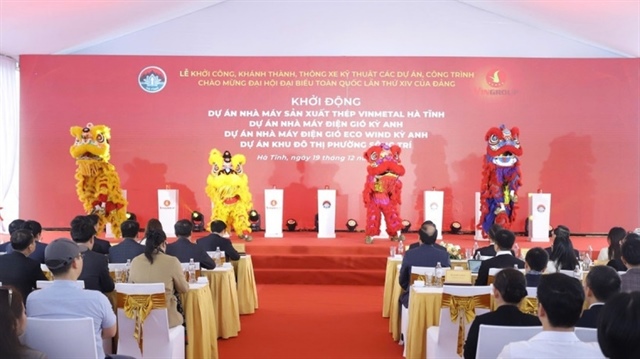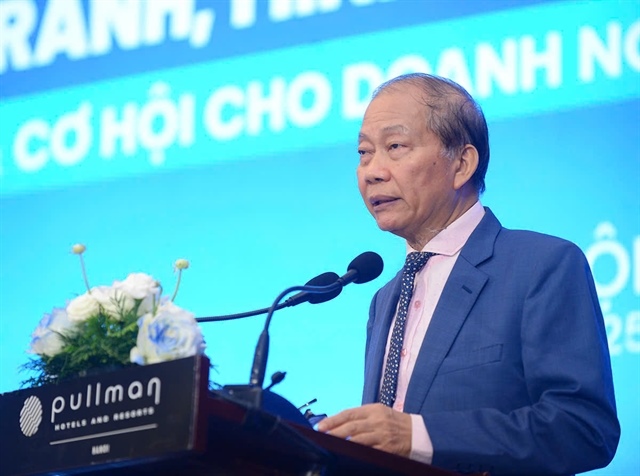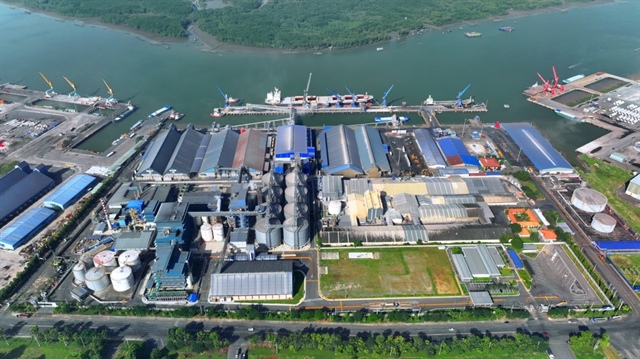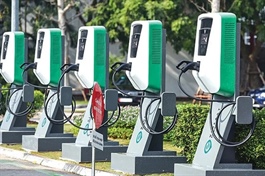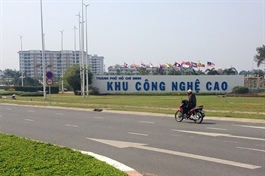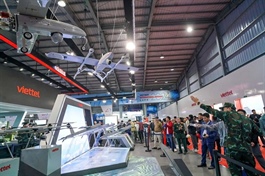Decoding the 'miracles' of Vietnam’s technology exports
Decoding the 'miracles' of Vietnam’s technology exports
Vietnam’s 2024 digital industry revenue was projected to reach US$152 billion. The country ranks second globally in smartphone exports, fifth in computer components, sixth in computer devices, seventh in software outsourcing, and eighth in electronic equipment and components.
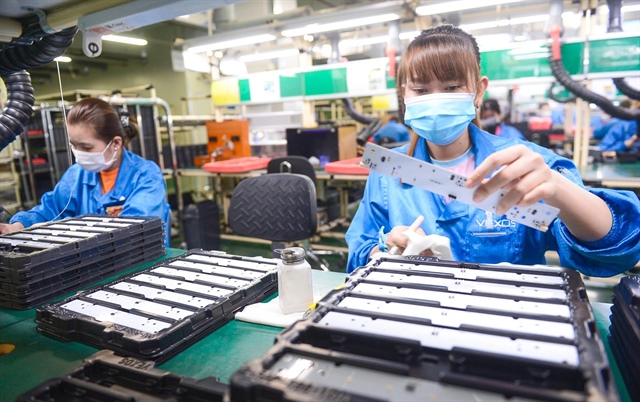
Employees work at a foreign-invested company at Tan Thuan Export Processing Zone in Ho Chi Minh City. Photo: Quang Dinh / Tuoi Tre |
However, beneath these impressive figures lies a concerning reality.
Approximately 89 percent of the component value must be imported, Vietnamese enterprises remain largely absent from the value chain, and provinces with high export values are not among the top 10 in budget revenue.
Experts are warning that Vietnam risks becoming the world’s 'assembly hub' and 'e-waste dump' unless it revises its strategy for attracting foreign direct investment (FDI), with stricter criteria for technology transfer and human resource development.
At the same time, support for domestic businesses is crucial to improve their capabilities and help them integrate meaningfully into global technology chains.
Concerns from top leadership
This issue has been highlighted by many, including General Secretary To Lam, who, at the recent National Forum on the Development of Vietnamese Digital Technology Enterprises, warned about the 'misconception,' 'self-delusion,' and 'complacency' within the electronics industry.
The FDI sector exports 100 percent of the value of phones and components, yet imports as much as 89 percent of the value of those components.
General Secretary Lam, the contribution of the FDI sector to domestic scientific and technological progress is still low.
Over 80 percent of FDI enterprises use medium-level technology, 14 percent rely on outdated technology, and about five percent use high-tech solutions.
As Vietnam advances, the country must adopt a more selective approach to FDI, aiming to avoid being relegated to a mere 'assembly and outsourcing hub,' or a global e-waste dump, as domestic businesses learn nothing from these investments.
In an interview with Tuoi Tre (Youth) newspaper, many economic experts agreed with the general secretary’s perspective on the current FDI situation.
Vietnam’s latest FDI, particularly in the digital technology sector, is breaking records with numerous multi-billion-dollar projects.
FDI registered capital reached $27.7 billion in 2022, $36.6 billion in 2023, and was expected to reach $38.23 billion in 2024.
Following the trend in global FDI shifts, it is predicted that Vietnam will continue to see rising FDI inflows through 2025 and beyond.
Since early investments by tech giants like Intel, Microsoft, and Samsung, other global tech heavyweights have followed suit, investing heavily in northern industrial hubs such as Hanoi, Bac Ninh, Bac Giang, Thai Nguyen, and Hai Phong.
Major investments have come from companies like LG in Hai Phong, Hana Micron in Bac Giang, Amkor Technology in Bac Ninh, NVIDIA in Hanoi, and Foxconn in Bac Giang.
The presence of these global FDI tech and industrial giants in Vietnam, with their massive assembly manufacturing plants, has significantly boosted the country's import-export values.
As a result, exports of electronics, computer parts, phones, and various components, as well as machinery, equipment, and spare parts have surged in recent years.
Over the past seven years, the export value from the FDI sector has shown a clear dominance over the domestic industry and accounts for over 70 percent of Vietnam’s total export value from 2018 to 2024.
|
|
| Workers at a foreign direct investment (FDI) factory in Dong Mai Industrial Park, Quang Ninh Province, northern Vietnam. Photo: Nguyen Khanh / Tuoi Tre |
Vietnamese businesses still outside high-tech value chain
Nguyen Van Toan, vice-chairman of the Vietnam Association of Foreign Invested Enterprises, stated that without FDI, Vietnam’s integration into the global market would not have been possible.
FDI supports and is a result of integration, driving Vietnam to adapt its economic policies to more effectively attract and benefit from FDI.
Toan emphasized, "We cannot deny the role of FDI in Vietnam's economic development, but it’s time to reassess how we attract FDI. Just seeing high-tech investors entering isn’t enough -- we need to evaluate what we gain from attracting those high-tech FDI projects. This is the crucial issue. If we look at the export performance of FDI in recent years, they export as much as they import, so we don’t gain much."
Toan proposed that the key to attracting FDI is increasing domestic value-added to 10-15 percent of the total revenue generated by FDI enterprises. Achieving this would significantly boost the benefits of FDI investments.
Dr. Pham Hung Tien, an FDI expert, echoed this view, pointing out that provinces like Bac Ninh, Bac Giang, and Thai Nguyen, which are major FDI investment hubs, have high export values but are not among the top 10 in terms of budget revenue.
This disparity highlights that the benefits from the 'miracles' of FDI exports are disproportionately small.
Vietnam must focus on attracting FDI that serves the domestic market, not just export-driven FDI corporations.
If FDI enterprises produce exclusively for foreign markets, collecting taxes will be challenging.
"They come to Vietnam to exploit cheap labor, and once the resource is gone, they will move their factories elsewhere," Tien warned.
|
|
| Workers at the Hana Micron Vina factory in Bac Giang Province, northern Vietnam. Photo: Ha Quan / Tuoi Tre |
How can Vietnam benefit more?
Discussing potential solutions, Toan sees the current environment as a prime opportunity to increase the value added by FDI investments.
For this to happen, Vietnamese corporations must collaborate with FDI companies and become more involved in their production and supply chains.
Recently, Samsung expressed interest in supporting local businesses in joining their production chains, but domestic companies lack the necessary strength.
Vietnamese businesses struggle with capital, technology, and qualified labor, while policies have not sufficiently emphasized the critical need for local firms to participate in FDI supply chains.
General Secretary Lam’s proposal to create policies enabling domestic enterprises to join FDI production chains is the right approach.
"Next, we need funds to acquire technology and invest in human resource training. This is the only way for us to stand on the shoulders of giants," Toan stressed.
Vo Xuan Hoai, deputy director of the National Innovation Center, emphasized the need for Vietnam to develop a set of criteria for selectively attracting FDI.
These criteria should prioritize innovation, high-tech contributions, and require investors to establish innovation centers, R&D facilities, and commit to transferring technology to domestic enterprises.
Hoai also proposed setting benchmarks to ensure the integration of Vietnamese companies into the FDI value chain, enabling them to become supporting partners.
Increasing the number of Vietnamese managers in FDI production lines would allow local officials and engineers to gain access to advanced technologies and accelerate the transfer process.
A notable example of this approach is NVIDIA’s R&D center in Vietnam, where nearly all employees and engineers are Vietnamese.
This setup not only facilitates technology transfer but also empowers local businesses to acquire core technologies, contributing to Vietnam’s innovation ecosystem.




